It’s been some time since I’ve reviewed one of the Sony APS mirrorless cameras, and the A6000 represents a fairly major set of changes for that line from where they started, so I recently spent some time in Southern Utah shooting with this camera to see where Sony has gotten to.
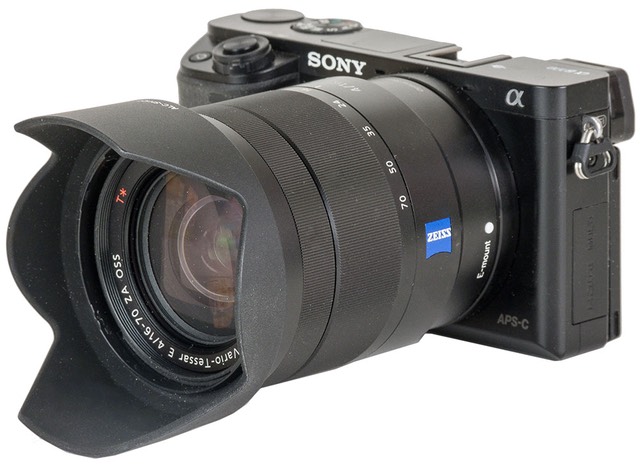
What is It?
In the old NEX lineup, we had four model lines (3, 5, 6, and 7). In the new A version of the lineup, we basically have two of the rangefinder style cameras plus the oddball A3000, which is more DSLR-like in style than the old Sony mirrorless. The A5xxx basically replaces the old NEX-5 line, while the A6000 seems to be a replacement for the NEX-6.
The old NEX models were thinner and more radical in design than the A6000, but the A6000 isn’t exactly a large camera. It’s quite small for an APS sensor camera of its capabilities, actually. The body design now is more rectangular (the old soap bar shape, though its a big soap bar), still with a prominent right hand grip. Part of the body bulking up from the original NEX models is the fact that, well, it has more things in its bulk. The EVF and built-in flash (plus hot shoe), for instance.
That hot shoe is actually one of the more interesting things about where Sony has been going with their designs. The original NEX featured an odd and somewhat vulnerable way to mount and power accessories, such as flash or external EVF. Sony has now moved to a much more traditional approach, with a regular hot shoe with forward power contacts for accessories that need them. Not only is this old way of doing things faster in getting an external flash on and off the camera, but I think it’s also sturdier than the old NEX solution.
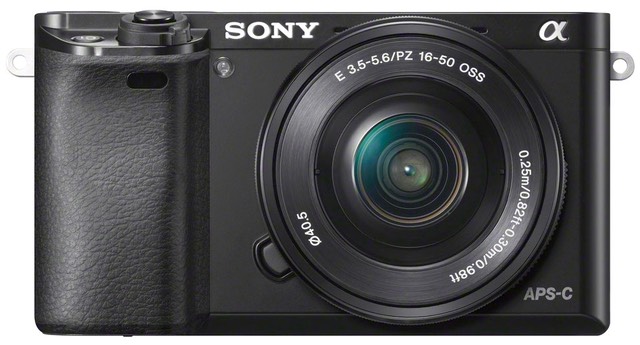
Other traditions coming back into the lineup (first seen in the NEX-6) are a real Mode dial and a rear command dial at the thumb position. A programmable AEL button is also where your thumb would expect it, though the rest of the UI tends to be the hybrid compact/NEX/RX style that’s evolved over several generations (three programmable buttons arrayed around a Direction pad, though the bottom button has now moved outboard from the LCD and the Play button is where I would have expected it from previous Sony mirrorless designs). There’s another programmable button next to the shutter release, as well. As with most recent Sony designs, the red Record Video button is tucked around the corner of the thumb rest where it’s more difficult to hit (but still possible, as I found out several times while hiking the red rock country).
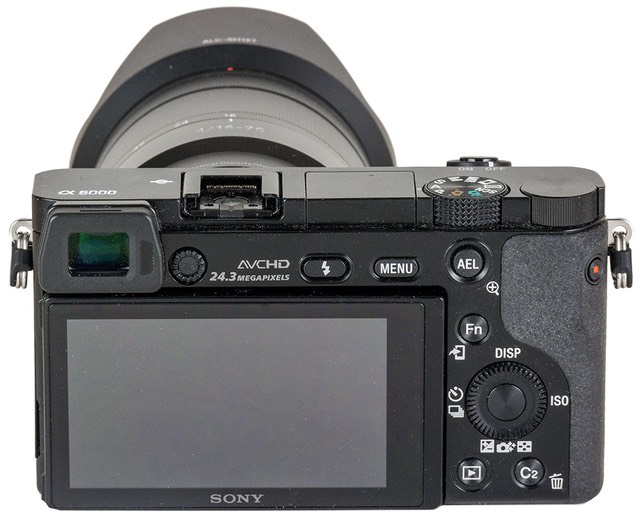
Up top is a pop-up flash that looks small and will have a hard time clearing lens hoods on most non-pancake lenses. GN is 20’ (6m) at ISO 100, so it’s not particularly powerful. Good thing there’s a hot shoe for external flash. The pop-up flash cannot control wireless flash. Flash sync speed is a slow 1/160, though, which is somewhat limiting. Maximum shutter speed is 1/4000.
Bracketing can be done in up to 5 frames and up to 2EV steps, which the HDR aficionados will like. The camera also supports an electronic first curtain shutter, which I’d recommend that most people leave set, as it minimizes shutter slap and actually quiets the camera a bit.
Inside we have the latest iteration of Sony’s 24mp APS EXMOR sensor (up from the NEX-6’s 16mp). This sensor contains 179 phase detect focus points (up from 99 on the NEX-6) that cover about 90% of the frame. In terms of APS-sized sensors, the Sony sensors have been the best performers for awhile now, and the 24mp one in the A6000 is basically the same sensor as you’d find in a Nikon D7100, other than the phase detect points. It appears that data output from the sensor is faster, too, which is one of the drivers of the enhanced video capabilities and the faster autofocus performance.
Video is 1080P/60 or 24, a horizontally-reduced 1080P/30 or 25, and VGA (480P) at 30 or 25 fps. The HDMI connector provides access to uncompressed video, though note that the HDMI connector is the micro-HDMI one. The camera itself records in AVCHD with a 24Mbps maximum bit rate, which is not so great.
802.11b/g/n WiFi with NFC connection ability is present and Sony’s Playmemories Apps are supported. The current version of the Bionz processor (X) adds some new capabilities such as diffraction correction/detail enhancement, as well as area-specific noise reduction (as opposed to a monolithic entire image NR). As with most recent RX and A cameras, the menu system is a familiar tabbed one, with six entries per page, and many (24) pages of options.
Compared to the NEX-6 the A6000 seems to replace, the A6000 has more phase detect points across a larger area of the sensor, more pixels, a slightly higher burst rate (11 fps), and autofocus is performed faster. The A6000 has a lower specified EVF (1.44m dot SVGA instead of 2.36m dot XGA) than the NEX-6. A number of other small changes and additions have been made, such as zebra stripes while recording video, uncompressed HDMI video output (8 bit 4:2:2). Things retained between the NEX-6 and A6000 are the tilting 3” LCD (90° up, 45° down), the NP-FW60 battery (still 360 shots CIPA via EVF), and the E-mount for lenses. Note that the LCD is 16:9 format while the EVF is 3:2. This has implications on framing stills and video (LCD is optimal for framing video, EVF for stills).
Overall, the camera is reasonably small (4.7 x 2.7 x 1.8”) and light (12 ounces, or 344g).
Price of the body at introduction was US$650, and the camera is made in Thailand.
How’s it Handle?
It’s a Sony.
The good news is that, after their initial foray into distinctly new user interfaces with the NEX series, Sony backed off from that with the NEX-6, RX-1, and all subsequent cameras. Today, you can pick up an RX-1, RX-10, RX-100, A5100, A6000, or any of the A7 models and find that the controls and menus are mostly the same across all of them. This is a good thing, though as I noted in my A7s review recently, there are still some optimizations Sony needs to make (e.g. dedicated video menu).
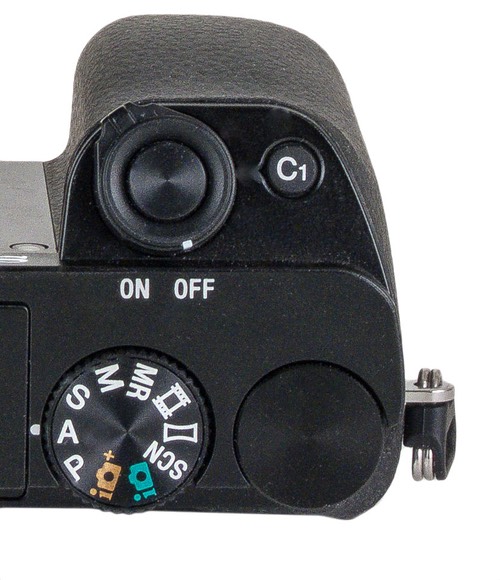
While the camera is small, the grip is substantial and has a rubberized covering, so the camera is easy to hold. I do wish that Sony would make the rear thumb hold just a little more substantial, but the A6000 grip works fine as it is. I find the rear command dial on the top panel a little too far right of where I’m used to, and it requires that you move your thumb off the slim rubberized hold on the back. The AEL button just to the left of the thumb position is very well positioned, however (and yes, it can be set to AF-On).
If there’s a button position I don’t like, it’s the MENU button. Of course, I’m not sure where else they could have put it on such a small camera. However, note that the MENU button is integral to menu navigation (it backs you up a level), which is done mostly with the Direction pad. The MENU button just seems a little out of place for that. Likewise, I’ve already mentioned the C2 button being moved away from the LCD to the lower rear corner of the camera, so that took a little relearning for me to get accustomed to.
One thing that’s a little frustrating to me is the use of the Direction pad to invoke a “set exposure compensation” mode. This is a compact camera type of control on the A6000. A camera this good frankly deserves a dedicated exposure compensation control that you can dial in directly. And no, you can’t assign that to the rear command dial, which has fixed functions for the various exposure modes (okay, you can swap which dial does what for manual exposure mode).
The good news is that you have a lot of customization abilities with the controls. Seven different buttons can be reprogrammed, and Sony is not miserly with the choices. Given the improved autofocus of the camera, it might not surprise you to find that I’ve assigned C1 and C2 to autofocus functions, and AEL to AF-On. DSLR users who are focus control addicts can pretty much get the camera set to their desire, even with their eye at the viewfinder. I still don’t like Sony’s Flexible Point system, though, as it requires a button press before you can move the focus area.
Responsiveness is up a bit on the A6000. Most of the time it wakes from sleep or powers on fairly quick. It’s not the instant on of a DSLR yet, but it’s also not the two second wait you see in some compact and mirrorless cameras these days. It’s less than a second. I wrote “most of the time.” In two weeks of fairly constant use I had at least four instances where the camera didn’t wake from sleep properly and I had to toggle the On/Off switch to get the camera’s attention. This seemed random to me; there wasn’t a pattern or predictability to when it did it.
Note that Auto ISO doesn’t have the ability to set minimum shutter speed. The camera sets the faster of 1/effective focal length or 1/60. Auto ISO is available in manual exposure mode, so you can use that to get around the limitation.
Playmemories now has an app or two that add something useful to the camera, though I really wish Sony would open up this program to some real photographer programmer types, so that we could develop some better choices. Even the WiFi app used as a remote control for the A6000 now works pretty well, and is reliable enough to at least use as a remote trigger. See my comments about batteries, though.

A6000 on left with smallest E-mount lens (16mm f/2.8) versus RX-100III on the right.
I should point out one thing that Sony did right that others keep getting wrong: the histogram doesn’t have white data abutting against white box outlines, which makes it difficult to see highlight blowouts. Indeed, Sony doesn’t use a box at all. I do wish that Sony would change the color of the final righthand positions on the histogram, though, ala Olympus. That would make it even easier to immediately recognize blown highlights. But at least if you look at the Sony histogram carefully, you can see what’s happening, unlike many other cameras.
Overall, I found the A6000 pleasurable to use, at least once I had plowed through all the menus and got things, including all the programmable button controls, set to my satisfaction. At times I wished that the EVF had more pixels and a faster refresh, but it was usable, even with glasses. I could have also used more rubber eyecup, as I found myself shading the EVF in bright light from time to time (remember, with glasses, my eyes are sitting well behind the slim supplied eyecup).
How’s it Perform?
Battery: The good news is that in extended shooting I’m easily getting more than the CIPA numbers, even with the EVF. In one case I was close to 500 shots. The FW50 battery is a bit of a workhorse for basic shooting.
The bad news is that you can reduce that number dramatically if you turn on WiFi (which argues to why aren’t we using low-power Bluetooth to command the camera and only turn WiFi on when we have to move actual images). Use of the flash also seemed to lower battery performance quickly, too, probably because the low output of the flash meant that it was almost always firing at or near full power and needed to completely recharge the capacitor most of the time.
Overall, though, the battery performance is reasonable for an EVF-equipped mirrorless camera.
Focus: Yep, you all skipped to this part first, didn’t you? ;~)
Most of the time the A6000 has focus performance like you’d associate with a DSLR. Initial acquisition is quite fast, even with multi-point focus methods. If your subject is static and has some contrast to it, you won’t be disappointed with the focus speed of the A6000.
Even continuous autofocus performance was quite fast. Certainly the camera thinks it is tracking focus at 11 fps with moving subjects.
Which brings me to accuracy. Two comments here, really.
First, as with many of the non-DSLR cameras, the default autofocus areas are a bit big. That means that the thing you really want to pinpoint focus on may not be the only thing that the camera is looking at in the box. Flexible Point focus reduces the size of the box, but it’s still bigger than a DSLR focus area, I think. Hard to tell for sure, as neither DSLR makers nor mirrorless makers disclose exactly what’s really happening. The A6000 uses a mix of phase detect and contrast, and it’s unclear if those two things are seeing the same area, too.
Most of the time, the A6000 was focusing exactly where I wanted it to. A few times, though, the focus box was big enough so that moved focus a bit from where I wanted it. At f/4 and slower (e.g. pretty much all the kit lenses and zooms) there’s enough DOF that this isn’t much of an issue in practice. But I noticed that I had some issues with this using the f/1.8 primes shooting wide open. Still, with static subjects I wouldn’t worry about focus accuracy any more than I do with DSLRs (which are also prone to focus errors with fast lenses wide open, for different reasons).
It was in sequences of tracking shots that I found a problem that can be an issue, though. Enough so that I went back and looked at quite a few other examples from other A6000 shooters to see if I saw the same thing in their sequences with moving objects. Simply put, focus accuracy can be—note the use of the words “can be", and not the word "is”—less than perfect in a tracking sequence. The photos are usable, but they’re just not quite tack sharp. I found this in quite a few sequences, and not just mine, but those others have published, as well.
The question is “what level of performance is this?” Is it “good mirrorless” performance? Consumer DSLR performance? Prosumer DSLR performance? Or what?
Before I write my conclusion on that, I need to point out that a lot of DSLR users, especially Nikon consumer DSLR users, are getting less than optimal performance out of their cameras with moving subjects. That’s because they leave them on AF-A. That mode tells the camera to think that the camera is in single focus mode, but if after a few moments it looks like the subject might have moved, to switch to continuous focus. The problem with that is that not only the camera sluggish to begin tracking, but it starts trying to track from a lens position deficit.
I mention that specifically because I’d say the A6000 is better than Nikon’s AF-A mode most of the time in putting together a sequence of usable photos on moving objects, but not as good as Nikon’s AF-C mode used correctly. On a dog chasing Frisbees at the parkway at 70mm (105mm equivalent), my D7100 was 9 for 10 on sharp shots. The A6000 was 4 for 10. All 10 shots from both cameras were probably what most people would call usable. The A6000 had more trouble with erratic motion than continuous motion, by the way (dog changing direction as opposed to running linearly).
So it’s a nuanced conclusion. The A6000 does have remarkably fast AF performance. With care, you can certainly get near-DSLR results out of it. Use a bit of DOF and you’ll cover most of its misses.
Image Quality: The A6000 has a Sony 24mp sensor in it, basically the best APS sensor that is available at the moment and equivalent to what Nikon is using in their DX DSLR lineup. The only way you’re going to beat the image quality out of this camera is with a full frame sensor.
One of the attributes of the Sony sensors is their ability to bring up considerable shadow detail. This is true even at higher ISO values. For example, here’s an ISO 1250 JPEG directly out of camera (don’t ask):
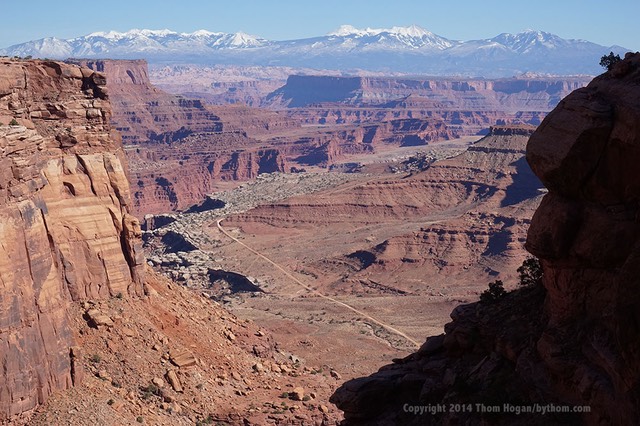
And here’s the raw file brought through ACR:
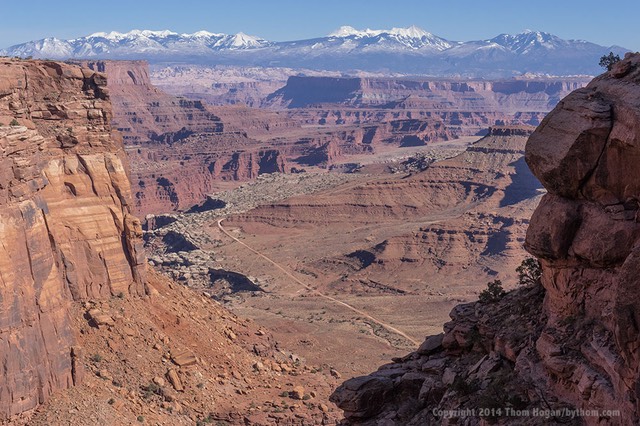
While it might be subtle in these JPEG reductions on the Web, note that there was highlight detail that could be brought back in on the snow-capped peaks, as well as considerable shadow detail on the right. At lower ISO values, this ability can be uncanny and sometimes even butt saving. But even as you press up in ISO values you can still make remarkable swings of the captured data with current Sony sensors. This accidental high ISO landscape gave me the chance to show just that.
Here’s another more extreme example taken at ISO 100:
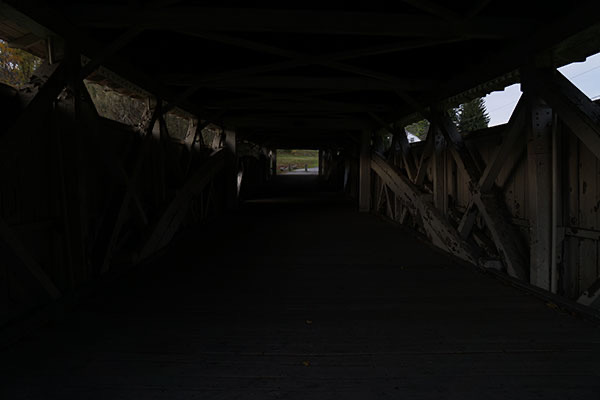
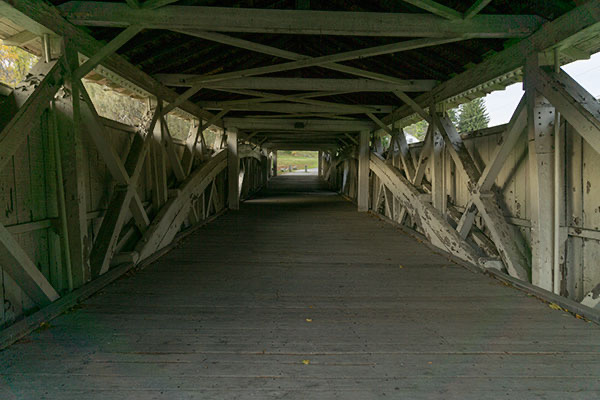
And yes, there’s a green tint in a number of areas when you’re inside this covered bridge, at least most of the year.
Remember though that Sony is using a compression system on the raw files that gives you 11-bit data with some information loss. On that second shadow recovery example I can see a few areas where the collision of noise from the shadow boost and compressed detail caused an artifact or two, though nothing that I'd consider obnoxious. The bigger problem is that I’m only working with 11-bit data instead of 14-bit data as I am with the Nikon bodies. So given my “optimal data” ethos I’d rather have the same data from the near identical sensor in my D7100 than the A6000. That said, even with the data losses, the A6000 pretty much trumps what you can do in data swings with the Canon Rebels at the moment.
Indeed, the A6000 with the 10-18mm f/4 lens is a real landscape wonder in a very small package. It’s making me rethink my use of the Olympus OMD for backcountry hiking (the Panasonic 7-14mm on the OMD isn’t quite as good; I’m hoping Olympus’ upcoming wide angle zoom will up the ante again).
I won’t push the point further. Basically, the A6000 is about as good as it gets in terms of image quality with an APS sensor. Sony has upped their JPEG game, too, so some (but not all) of the plastic impact when noise reduction kicks in is now gone. Like Nikon, Sony seems to tune their JPEG colors more towards a neutral rendering and lower contrast than do some others (e.g. Fujifilm and Olympus), and without much apparent hue shifting.
Low light capability? Pretty decent:
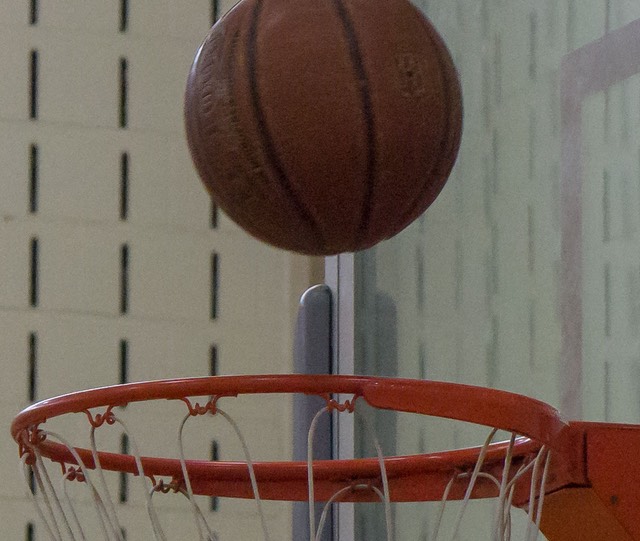
Colors are a little blocked up at ISO 3200, but detail and noise handling are quite good.
Final Words
One of the questions that you need to answer is this: what am I going to do about lenses? Sony was churning E-mount lenses for awhile, then they introduced FE-mount and new E-mount lens announcements seemed to disappear.
The reason I mention this is that there are some sub-optimal lenses in the lineup when used with the 24mp sensor the A6000 sports. The 16-50mm kit lens makes for a very small combination, but it’s decidedly soft in the corners, and raw shooters won’t like the high linear distortion. Likewise, the 16mm f/2.8 is soft on this camera compared to competitors. The 24mm f/1.8 Sony Zeiss is big and expensive. And all the variable aperture E-mount zooms seem to have some liabilities to them when pushed to 24mp.
Which leaves the 35mm f/1.8, 50mm f/1.8, the 10-18mm f/4, 16-70mm f/4, and maybe the 18-105mm f/4 as my preferred choices for the A6000. The first two are excellent. The last three are very good, sometimes excellent depending upon how you’re using them. Of course, you could put third party lenses on (the expensive Zeiss Touits—12mm f/2.8, 32mm f/1.8, 50mm f/2.8—the Sigma primes, or a few others that have appeared). But I do think that if you’re thinking about moving into the A6000 as your main camera you really need to think about lenses and what you really want out of the combo. It seems a bit of a waste to put less than great lenses in front of a sensor that is great.
Right now, telephoto doesn’t offer a wealth of options. You can use the 70-200mm f/4 FE on the A6000, but that’s about it for quality telephoto.
As always, someone will write in to say “just use mount adapters.” As always, I’ll point out that I don’t like this solution. While the A6000 has some nice features that’ll help you manually focus lenses, I’m not sure the mount itself is up to a lot of abuse. Mine has a small bit of flex to it, though standard E-mount lenses seem to fit snugly and then lock out the flex. Sure, if you’re into using adapters and legacy lenses, go for it. I’d be a little leery about putting big heavy lenses out front, though, given the mount dynamics.
Overall, the A6000 is quite a bargain, especially at its discounted prices as I write this. You’re getting DX DSLR image quality in a far smaller and lighter package, with very little drawback. But the A6000 is not really “DSLR style,” so if you’re looking for that you might want to explore the Fujifilm X-T1, Olympus E-M1, or Panasonic GH4. The smaller size of the A6000 and it’s rangefinder type style reduce the area to place additional controls, such as that missing exposure compensation dial I’d really like to see on this camera.
We’ve come a long way from the original NEX-5. A long, long way. A little bit of additional size and weight is compensated for by one heck of a lot of additional performance and the addition of useful things such as the built-in EVF, pop-up flash, and more conventional hot shoe. Yet many of the things that attracted to me to the NEX-5 still remain. The A6000 is a high performance engine in a smallish package. For work in the 10-70mm range (15-105mm effective), it’s as good as any mirrorless camera out there, maybe better.
Recommended (2014, 2015, 2016, 2017, 2018, 2019, 2020) consider the newer A6100 model that replaced it.